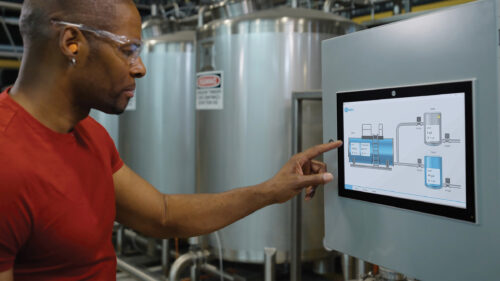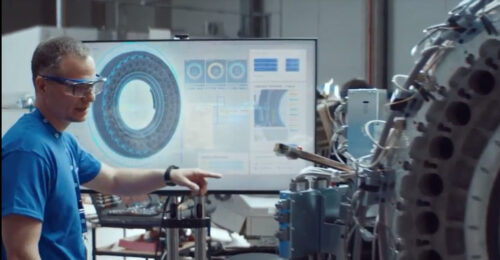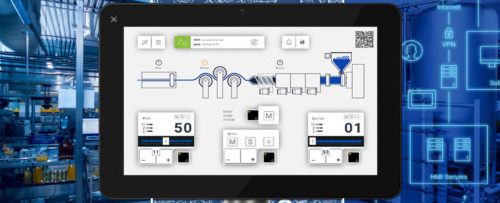Contributor’s Guide
Since 1947, PLANT ENGINEERING magazine has been the leading problem-solving information source for America ‘s industrial plant engineers. It has won virtually every readership study in its field during the past 20 years. One reason for that success is that we attract the best minds in our industry to share their knowledge with our readers. It is in the sharing of information between key industry leaders and plant engineers that our profession grows and prospers.
The PLANT ENGINEERING Editorial Approach
How to contribute
PlantEngineering.com and electronic newsletters
Who to Contact
General Policies and Procedures
The PLANT ENGINEERING Editorial Approach
As the industry has changed, so has our editorial approach. Plant engineers are being asked to take on a wide variety of plant functions. PLANT ENGINEERING recognizes this, and offers information on how to solve the day-to-day problems of operating and maintaining the industrial plant and its related facilities, as well as how to install and maintain the systems and equipment used in these plants. We also offer insight and research on some of the crucial issues facing manufacturing in the 21 st Century.
We cover every product and process used in a manufacturing plant — from HVAC and heating to flooring, from compressors to lubricants, motors to maintenance, paints to lighting. We offer practical management and maintenance procedures to help the plant engineer do his job a little better every day.
How to contribute
We have several other places for readers to contribute to our magazine: Forum: This is where industry opinions are sought. We welcome letters to the editor, comments on stories you’ve seen in PLANT ENGINEERING or on general industry issues, and other comments you’d like to share. Management Side: This is a contributed article of general interest on plant management or overall “corner office” topics of general interest. We are happy to receive unsolicited contributions for Management Side, but the decision to publish rests with the editor. Please limit your essays to 1,250 words. Electrical Connection: The department features case studies or view on issues related to electronics. We welcome contributions (1,000 words) and will contact those who will be published. Automation Connection: Our newest column focuses on the automation sector, one of the fastest growing areas of plant operations. We welcome contributions (1,000 words) and will contact those who will be published. Topical features: This is the place where our industry experts can best showcase their knowledge. Articles should be no more than 1,600 words (but can be less) and should include all appropriate graphics or art. There are only two restrictions on such submissions:The article must be unique to PLANT ENGINEERING . We require all writers to sign agreements to help us ensure the content is unique to our readers.The article is not product-specific. We are happy to identify product managers, marketing managers or other supplier executives as authors for our features, but we will not mention specific products or companies in the content of our features. This allows us to maintain our editorial independence.We have four areas of general coverage each month:Electrical EngineeringMechanical EngineeringAutomation EngineeringMaintenance & ManagementWithin each of these areas are all the traditional disciplines covered in PLANT ENGINEERING . Stories may have application in more than one area, and we’ll acknowledge that in our presentation. Update: This will be part of each of our four magazine sections. Update will include news and items of interest to readers of that particular area. We welcome receipt of news items for Update. Case studies: We welcome suggestions of how a product or solution technique (not a specific product) helped improve a plant’s efficiency, productivity or operational effectiveness. What we’re looking for are measurable changes in an organization. These articles can be suggested by a plant operator or by a product specialist, but the focus of the article is the plant operation. We will evaluate submissions to ensure they focus on the solution, not the product.We receive a high volume of submissions. It may be that we won’t use every article submitted for the magazine, but we may decide to share them with our readers on our Website, or in one of our monthly newsletters. We also will promote those topics in the print magazine. Which brings us to…
PlantEngineering.com and electronic newsletters
The Internet has created wonderful new opportunities for us to communicate faster. PLANT ENGINEERING has a number of electronic newsletters which are published regularly to speed information to our subscriber base. Federal law requires that all electronic products such as these be on an opt-in basis.We published Plant Mail weekly. Hot Wire is published monthly, focusing on electronics. Our two other newsletters: Hot Wire on Automation and Hot Wire on Instrumentation are published on alternating months. We also publish Maintenance Connection as a regular monthly newsletter.The most immediate way we communicate with our readers and the industry is PlantEngineering.com , our Website which covers all aspects of plant management. Beyond simply a repository for our print product, PlantEngineering.com is a place for breaking industry news, updates on stories that have appeared in the magazine and a research tool for engineers who are looking for some of the on-the-ground knowledge found in PLANT ENGINEERING .The Website is constantly being updated, and provides an excellent way to inform the industry about breaking news. Submission guidelines are the same as for the print product. We may use any materials we receive in our electronic products as well as our print products.
Who to Contact
PLANT ENGINEERING editor Bob Vavra is your first contact to discuss story ideas and suggest potential stories for our publication. We are interested in hearing ideas from our readers on stories that are of interest, and we try to match those ideas with the best experts in our field. We also publish an editorial calendar each year (available on our Website at www.plantengineering.com) and look to place stories into the magazine based on that calendar.
The best practice is to call first to discuss an idea for a submission. We can then see where it might fit in our editorial calendar, or when appropriate, where we might fit it in to our existing schedule. We prefer that you contact us prior to writing your manuscript so that we can guide you in the content.
We’d also ask that those submitting stories include an abstract or brief outline describing the article content. The availability of photos or other illustrative materials should be explained or samples provided. Our editors will work with you on the development of your article and the details of submission.
General Policies and Procedures
How to submit: Articles should be in Word, and all graphics should be 300 dpi, jpeg or tif files. We may request larger files be submitted on CD-ROM. Feel free to submit text and graphics on a CD-ROM.
Deadlines for editorial material vary according to the type of material. In the case of unsolicited features, we will contact you about when we plan to run a story. Because of production and magazine publishing issues, however, we cannot guarantee any story will run in a given issue.
Complimentary Copies . Feature article authors automatically receive a copy of the issues in which their articles appear.
Reprints are available after publication in PLANT ENGINEERING . All reprints are custom made, and prices vary. For quotations, contact Reprint Services at (651) 582-6004.
Do you have experience and expertise with the topics mentioned in this content? You should consider contributing to our CFE Media editorial team and getting the recognition you and your company deserve. Click here to start this process.





